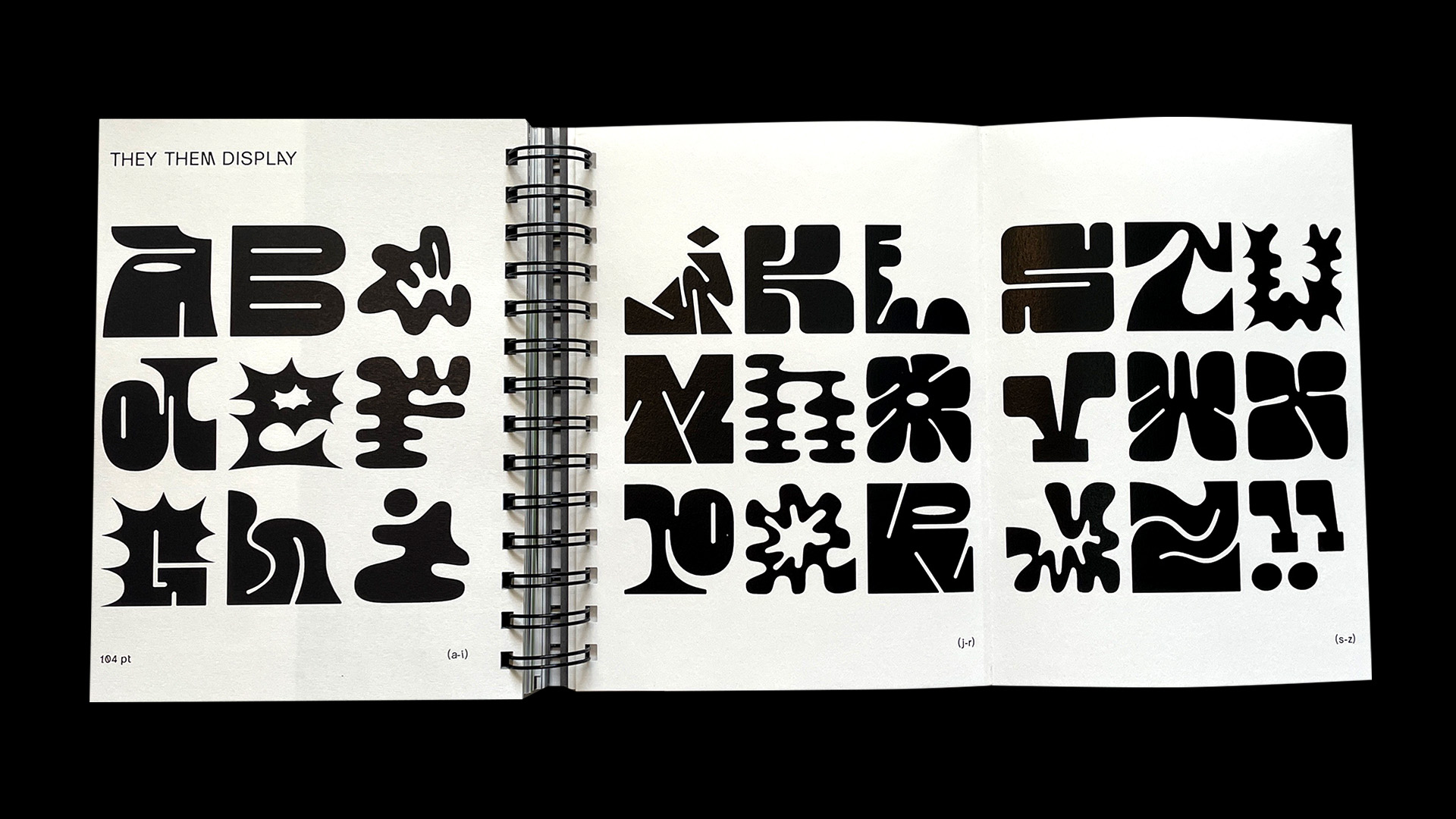

Olivia Erskine
They Them
A Nonbinary Typeface
This project is created in responce to the question: “How can typography be used to express nonbinary gender identity?” It takes typography and gender - two things typically divided by binary categories - and ventures outside of their confined constructs. Its intention is to explore the experience of gender beyond the binary, allowing those who exist in this space to see themselves reflected in a typeface.
A binary is something divided into two parts; two groups or classifications considered to be diametrically opposite. In Western society, the separation of individuals into binary categories based on physical anatomy has led to stereotypes that now define ‘men’ and ‘women’: men are strong, women are weak, men are practical, women are emotional. This division enforces a binary construct of gender, although the reality of gender defies these notions and is inherently nonbinary. Men are emotional, and women are strong - the characteristics that are seen to divide gender groups are upon closer inspection the same characteristics they share. Once this is recognised, what is left to divide us?
‘They Them’ is a typeface that exists outside of the binary. It is an exploration into the realm of nonbinary gender identity, and the space that sits between two halves. It discusses gender as a mode of expression; malleable to your sense of self rather than defined by your anatomy. Through the alphabet, each letter depicts an element of identity surpassing the categories of male and female. The result is a typeface that acts as a taxonomy of gender beyond the binary.
The letters of this typeface reject binary categories not only in their meaning, but also their form. Each letter is crafted as not to enforce the binaries often apparent in modern typography. Many of these typographic binaries uphold the same structures that create division within society, in example rigid and bold lettering seen as ‘masculine’, while fluid and ornamental is seen as ‘feminine’. In order for the typeface to be reflective of nonbinary gender, these structures have been either blended or omitted. ‘They Them’ is neither serif nor sans, roman nor italic, uppercase or lowercase, rigid or fluid. It sits in the space between the two halves; a complete nonbinary entity.




